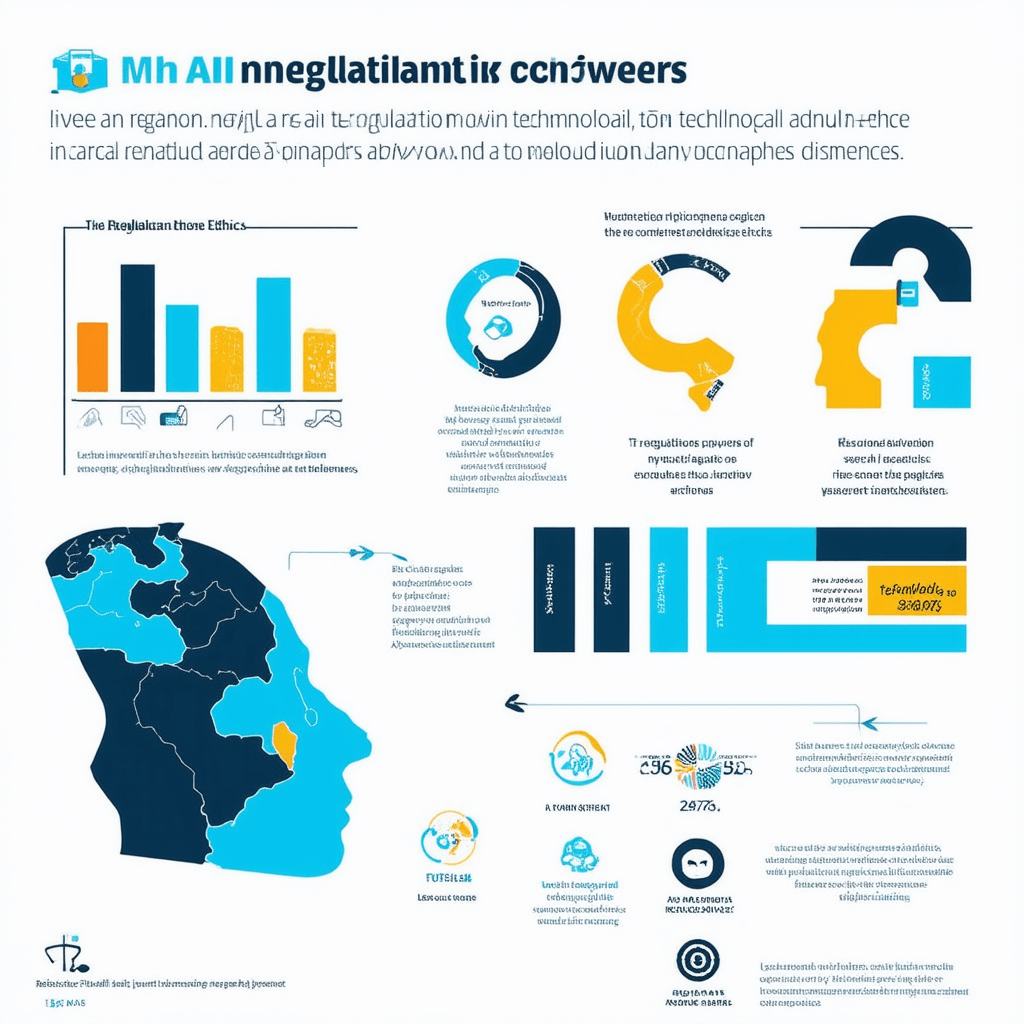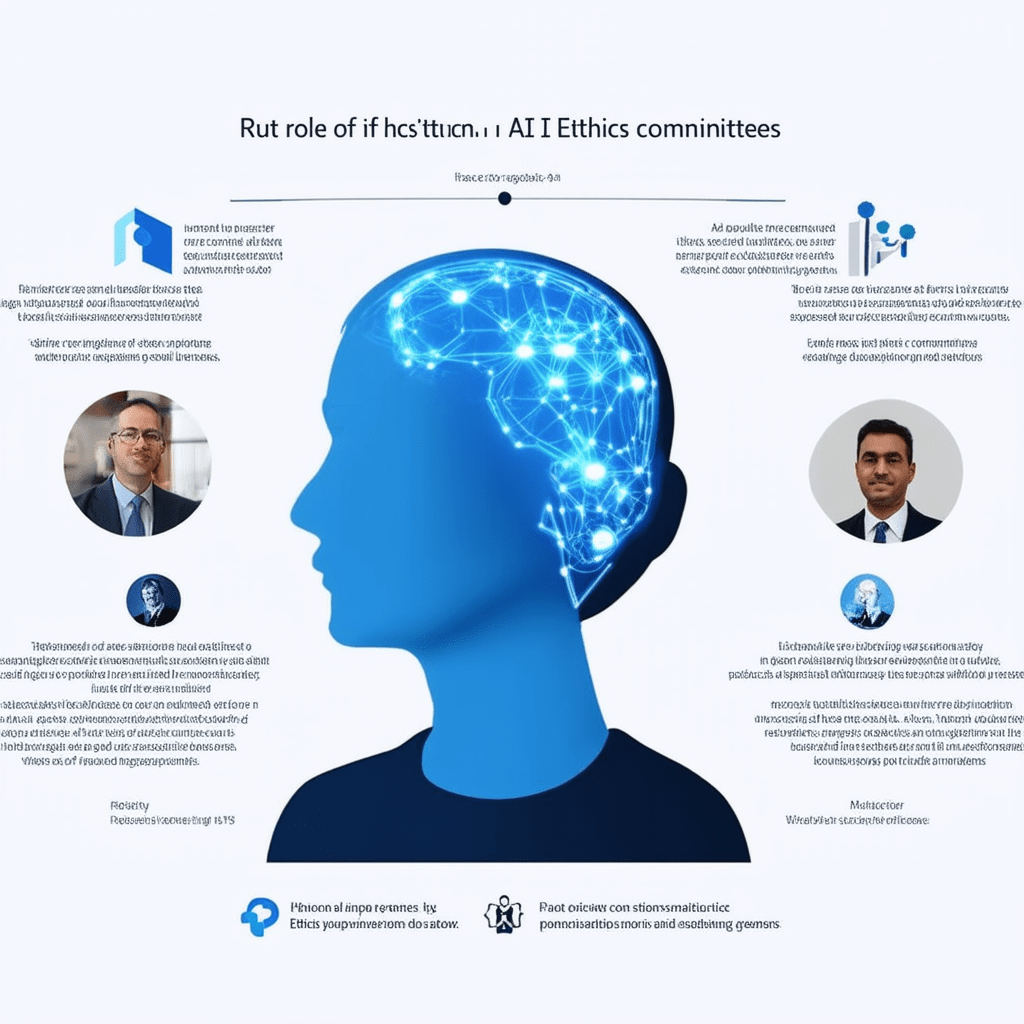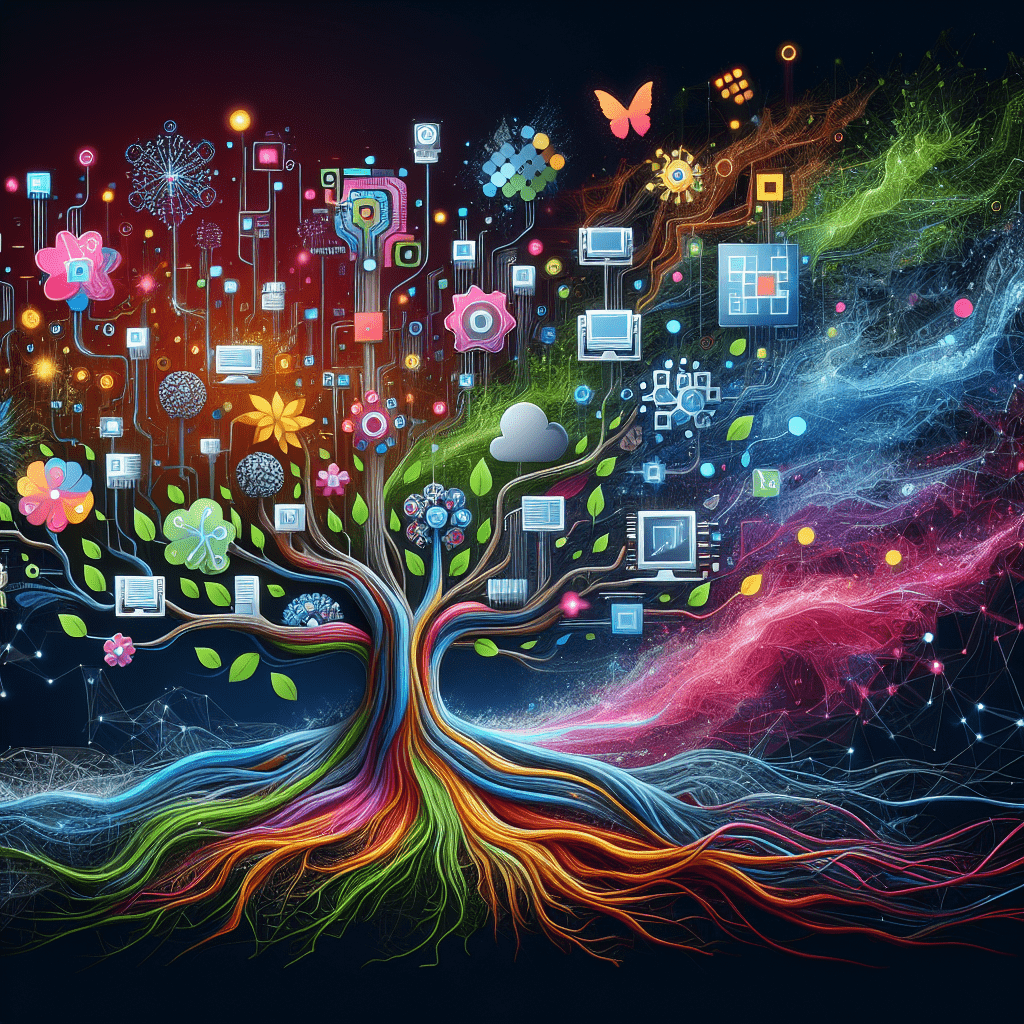Introduction: A Deep Dive into AI Regulation
Table of Contents
The rapid rise of artificial intelligence (AI) technologies has introduced a suite of ethical, legal, and societal challenges that require robust regulatory frameworks. As someone who has navigated the intersection of technology and policy, I’ve witnessed firsthand the complexities and nuances of AI regulation. For instance, while attending a tech conference in Brussels, I saw how the General Data Protection Regulation (GDPR) was causing a significant stir among tech companies, forcing them to re-evaluate their data handling practices. (Read our full guide on AI Ethics and Future Predictions.)
This isn’t just about compliance; it’s about adapting to a new era where technology and human values must align. In my experience, the GDPR was a wake-up call for many. It highlighted the need for transparency and accountability. Companies could no longer hide behind vague data policies. They had to explicitly state how data was collected, processed, and stored. This shift was monumental, especially for tech giants that thrived on data analytics to fuel their algorithms.
Consider the example of a major social media platform that, due to these regulations, had to overhaul its consent mechanisms. Users needed clearer options to opt in or out of data sharing, altering the user experience drastically. This was not just a legal exercise but a cultural shift, pushing tech companies to consider the ethical implications of their designs.
Moreover, the societal implications were profound. People became more aware of their digital rights, leading to a more informed public discourse about privacy. From a practical standpoint, this awareness has put pressure on lawmakers to further refine regulations, ensuring they keep pace with rapid technological advancements.
The key takeaway here is that AI regulation is not a one-size-fits-all solution. It requires continuous dialogue between technologists, policymakers, and the public. Each step forward is a learning process, revealing new challenges and opportunities. The journey is ongoing, and as AI continues to evolve, so too must our frameworks to ensure technology serves the greater good.

Key Benefits and Advantages
AI regulation isn’t a static set of rules but a living conversation that involves technologists, policymakers, and everyday people. It’s a bit like a dance, where everyone needs to move in sync to prevent stepping on each other’s toes. This dance becomes more intricate as AI technologies evolve at a rapid pace. Just take a look at how facial recognition technology has been handled. Initially, it was embraced for its potential to enhance security and convenience. But soon, concerns about privacy and surveillance emerged, prompting a reevaluation of its use.
In my experience, one of the biggest challenges is balancing innovation with ethical considerations. For instance, AI-driven medical diagnostics can revolutionize healthcare, offering faster and more accurate results than traditional methods. However, what happens when an AI makes a mistake? Who’s accountable? This is the sort of question that regulators grapple with daily.
From a practical standpoint, effective AI regulation requires continuous learning and adaptation. Consider the General Data Protection Regulation (GDPR) in the European Union. It set a precedent for data privacy but is already being revisited to address new challenges posed by AI. This shows that legislation isn’t a one-time fix but an ongoing process.
The key takeaway here is that staying informed and engaged isn’t just a responsibility for those in the tech industry. It’s something every citizen should be involved in. After all, the technologies we’re building today will shape the world of tomorrow. By participating in this evolving dialogue, we can help ensure AI technologies align with our ethical values and societal norms, ultimately serving the common good.
- Ensuring ethical AI development isn’t just a checkbox on a compliance form; it’s about embedding moral principles into the very fabric of AI systems. In my experience, this means considering the impact of AI on society, such as how algorithms might inadvertently perpetuate biases. For instance, facial recognition software can often misidentify individuals from minority groups due to a lack of diverse data during the training phase. This isn’t a small hiccup—it’s a significant ethical concern. Developers need to prioritize inclusivity and fairness by actively seeking diverse datasets and implementing bias detection mechanisms. Ethical AI development also involves ongoing scrutiny and updates, not just a one-time audit. It’s like maintaining a garden; constant care and attention are needed to ensure it thrives without harmful weeds.
- Transparency and accountability in AI are more than buzzwords—they are the bedrock of user trust. When AI systems make decisions that affect people’s lives, whether it’s approving loans or diagnosing medical conditions, users deserve to know why and how these decisions are made. From a practical standpoint, this means companies should open up their algorithms to independent audits and explain their decision-making processes in layman’s terms. It’s not enough to say an AI is ‘too complex’ to understand. A common mistake I see is organizations hiding behind complexity, which erodes trust. Transparent AI systems should also offer recourse for users to challenge or question outputs. This level of openness is akin to understanding the ingredients of a meal—people have a right to know what they’re consuming.
- Facilitating international cooperation in AI regulation is not just about countries agreeing on a set of rules; it’s about creating a unified approach to tackle global challenges. AI does not respect borders. A chatbot developed in the U.S. can be used in Japan, and its implications may vary widely depending on local laws and cultural contexts. International cooperation ensures that AI technologies are safe, fair, and beneficial worldwide. This requires countries to share data, best practices, and regulatory frameworks. One successful example is the European Union, which has led initiatives like the General Data Protection Regulation (GDPR) that resonate globally. The key takeaway here is that cooperation can prevent regulatory fragmentation, which can stifle innovation and lead to a patchwork of conflicting standards.
How It Works: A Practical Explanation
Governments around the globe are finding themselves at a crossroads, trying to strike a delicate balance between fostering AI innovation and ensuring robust regulation. This balancing act isn’t just about drafting legislation; it’s a complex puzzle with pieces that include industry self-regulation and international collaboration.
Take, for example, the European Union’s AI Act. This ambitious piece of legislation aims to set a comprehensive framework that categorizes AI systems based on risk levels. While this might sound like a step in the right direction, it raises questions about innovation stifling. Critics argue that stringent rules might discourage startups that can’t afford compliance costs, potentially hindering technological advancements.
On the flip side, encouraging industry self-regulation allows for agility and adaptability. Companies can innovate without constantly waiting for government approval. However, this approach can lead to a lack of accountability. Without oversight, there’s a risk of ethical standards being overlooked in the race to market dominance.
International agreements add another layer of complexity. Consider the ongoing discussions among G7 countries to establish global AI standards. Such efforts are crucial to prevent regulatory gray areas that companies might exploit. However, aligning diverse national interests is no small feat. Countries have varying priorities based on their economic and technological landscapes, making consensus challenging.
As these strategies unfold, governments must weigh national priorities like economic growth and security against global implications, such as ethical standards and international competitiveness. The key takeaway here is that while each approach offers distinct advantages, it also presents unique challenges that demand thoughtful analysis and strategic foresight.

Case Study: A Real-World Example
Let’s dig deeper into the nuances of regulating autonomous vehicles by revisiting a pivotal moment in their history. The incident in 2018, where a self-driving car tragically struck a pedestrian in Arizona, was a wake-up call. It wasn’t just about the accident itself but what it revealed about the broader landscape of AI regulation. This event forced both regulators and tech companies to confront the uncomfortable truth: our laws had not kept pace with the technology we were deploying on public roads.
In response, there was an immediate call to action. Regulatory bodies began scrutinizing the existing frameworks, realizing they were inadequate for addressing the unique challenges posed by autonomous vehicles. The concept of liability became a hot topic. Who was to blame—the software developer, the car manufacturer, or perhaps the company conducting the test? These questions weren’t just academic; they had real-world implications for insurance policies and legal accountability.
Companies, too, felt the heat. Many paused their testing programs to reconsider safety protocols, investing more resources into simulations and controlled environments before returning to public roads. For instance, Uber, the company involved in the incident, temporarily suspended its self-driving operations and overhauled its safety measures, including new sensor systems and updated driver monitoring procedures.
This case is a textbook example of how regulations must evolve alongside technological advancements. It’s a delicate dance, balancing innovation with public safety, and it shows the importance of proactive regulatory frameworks that can adapt to unforeseen challenges. The key takeaway here is that while technology moves at a breakneck pace, regulatory bodies must be agile and forward-thinking, ensuring that public safety remains paramount while fostering innovation.
Conclusion: Key Takeaways
AI regulation isn’t just a set-and-forget affair; it’s an ongoing conversation that evolves as technology advances. This isn’t merely a task for lawmakers or tech experts; it’s a collective responsibility that includes everyone who interacts with AI, which today is most of us. Imagine AI as a river, constantly flowing and changing course. If we don’t keep the banks fortified and the flow monitored, it could either dry up or flood the plains.
In practical terms, this means we need a multi-layered approach to regulation. For instance, consider the European Union’s AI Act, which categorizes AI systems based on risk levels. By tailoring rules to risk, they aim to minimize harm without stifling innovation. Yet, even this proactive step requires constant updates and public input to stay relevant.
From a real-world standpoint, think about the role AI plays in medicine—where algorithms can assist in diagnosing diseases but also carry the risk of bias. Here, continuous dialogue between tech developers, healthcare professionals, and patients is crucial to ensure AI tools are both effective and ethical.
Participation is key. Whether it’s participating in local forums, contributing to surveys, or simply staying informed through reliable sources, every voice matters. By engaging with these discussions, we help shape a regulatory landscape that not only protects but also champions the positive potential of AI. Remember, the goal isn’t to halt progress but to guide it responsibly. That’s the only way AI can truly serve the common good, aligning with our ethical compass and social standards.

